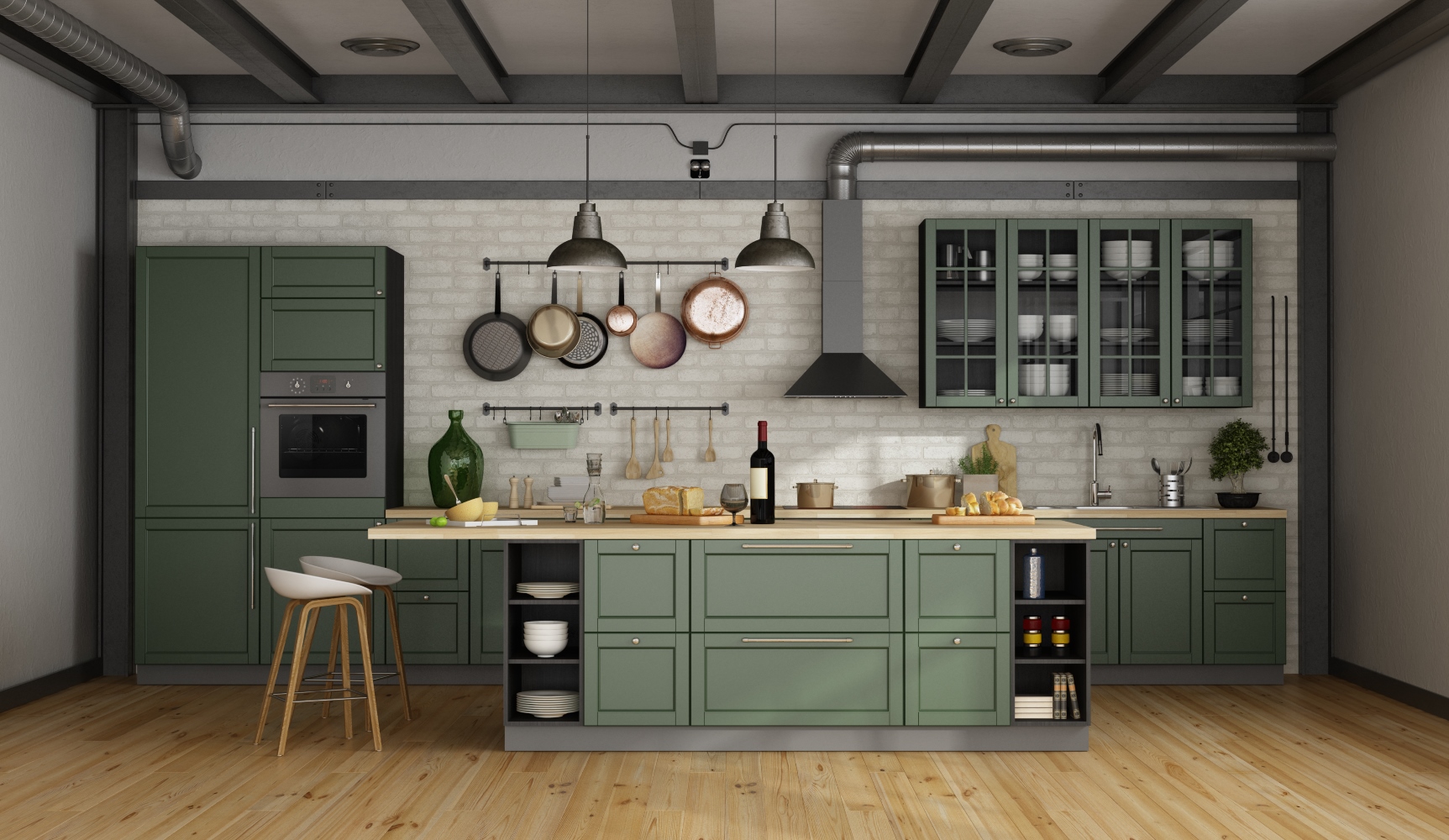
When you're ready to update your home, you can reduce expenses and your carbon footprint by making environmentally friendly choices. Your appliances, product choices, and even building materials can lessen the energy it takes to use your kitchen. Remodeling a home can get expensive, but there are many different loan options available that can help. It might seem counterintuitive to get a loan, but if you use those funds to make environmentally friendly, sustainable upgrades then you will be reaping the rewards for many years to come.
Appliances
Large appliances with the Energy Star rating are constructed to be more efficient and reduce the amount of electricity it takes to keep them running. The older the refrigerator, the less likely it is to be energy-efficient. Whether you have water run to the refrigerator or not is up to you, but if you're upgrading the space, a new fridge is a good choice.
For the most energy-efficient stove, consider adding an induction cooktop to your kitchen. An induction cooktop generates heat via magnetic induction, rather than via a gas flame or a metal coil. If the majority of your cookware is aluminum, you will likely need to add a cast iron adapter to the cooktop or invest in cast iron or magnetic steel cookware. A glass-top stove is second in efficiency and will allow you to work with lighter cookware.
Building Materials
While you're updating your kitchen, consider adding energy-efficient windows to your space. One of the big challenges in this workspace is that heat can build up quickly in the summer months. If your windows can keep out the heat of the sun, your task of cooking dinner while not roasting the cook will be easier.
Other building material options in your kitchen renovation include recycled or end lot products. If you want a tiled backsplash, check your local ReStore, or consider an end lot from a salvage buyer. You can both save money and reduce what ends up in the landfill.
Keep Things Pure
In addition to keeping costs contained and making the space energy-efficient, focus on purity. Whether you're on well water or are in the city, a reverse osmosis water filtration system can be added to your home easily while everything is torn up, and you can enjoy the benefits of pure water every day when your renovation is done.
Also, keep an eye on the finishes you use. If you're installing new cabinets, try to work with real wood products finished with simple sealants that won't outgas for an extended period of time. If your new kitchen has some particle board products in it, try to do your renovation right before "shoulder seasons" or spring and fall, so you can have windows open to let in the fresh air.
Focus on Water
Invest in a dishwasher that uses water efficiently to clean your dishes. Once you've got your dishwasher of choice installed, carefully review the manual to make sure that you're using the right setting each time. Both energy and water can be conserved with a new dishwasher. Be aware that, depending on the cycle, your dishwasher can use up to 8 gallons of water to clean your dishes.
Also, if you tend to pre-rinse, then stop. Dishwasher detergent cleans your dishes with enzymatic chemistry. It actually will cling better and scrub longer if you leave food residue on the plate. Scrape away particles, but don't pre-rinse your dishes.
Get Creative
In addition to putting in energy-efficient windows and appliances, get creative in your cooking. For example, if you have a patio or deck off of your house that gets direct sun, consider setting up a solar oven to bake potatoes or roast sweet corn. Fire up the grill to cook up your protein, let the sun cook your starch and you can stay calm, cool, and collected while fixing a salad indoors.
Using the sun to make tea has long been popular in the summer months, but a sun oven may be a new idea for those who don't camp. Functionally, these exciting tools focus the power of the sun at a single, tightly sealed black pot. You can expect temperatures of up to 400 degrees Fahrenheit. For safety's sake, you will want to use a thermometer when cooking meat.
Your energy-efficient kitchen can both reduce your carbon footprint and make your home life a little simpler. Invest in recycled products that cause no indoor air pollution. Cook with magnetic induction and bake with the power of the sun.
You may also like
4 Sustainable Ways to Renovate Your Home
Eco-Friendly Plumbing Priorities Before You Leave for Vacation
Things to Consider When Choosing Energy-Efficient Windows for Your Home
5 Green Cooking Methods That May Surprise You
